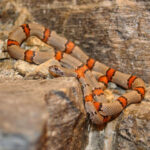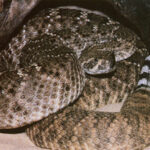Some people are fascinated by snakes, while a majority of people would rather run the other way then to encounter one. These secretive animals are misunderstood, and have been considered evil serpents since Biblical times. Ever since Adam and Eve, they are almost portrayed negatively. A person who is considered unpleasant is often called a “snake,” and many people will kill these animals if they are discovered. There are false perceptions that snakes will chase people to attack them, or that they will strangle sleeping babies in their cribs. These falsehoods are ridiculous, and are based on “old wives tales” rather than scientific evidence. With the exception of a few poisonous snakes in Asia, these creatures do not chase people, nor do they spend time in babies cribs. They try to hide from humans and animals that they consider predators, and will only defend themselves if provoked into action.
Snakes are beneficial to humans. If they did not reduce the rat population in Europe centuries ago, the Bubonic Plague would have become an even worse pandemic. Farmers rely on them to keep their barns free of rodents, who tend to eat their food, and leave droppings all over their property. This is vital to continue the process of “checks and balances” in nature, and most snakes do not mind limited interaction with human beings. While it is not wise to attempt picking up a eight foot long black rat snake, it is an amazing experience to watch one climb a tree.
If you are interested in getting a pet snake, consider yourself lucky. There are plenty to choose from, with a large variety of sizes, colors, and temperaments. They are a lot like dogs and cats in this regard, and for those who have the sniffles around those furry animals, they will be happy to have a hypoallergenic snake for a pet. The most important aspect before ownership, is to do a lot of research on what type of snake is better suited for your needs. You have to consider cage size requirements, food supplies, veterinarian care, and local laws before selecting an animal. A good place to learn about snakes, and to see them up close, is a snake show. Libraries have a lot of books covering these animals and their care requirements, and on line breeders have resources as well. Before purchasing the animal, be sure to have a caging setup and supplies that will allow them to be comfortable and safe.
While there are plenty of choices that will be fine, there are three snakes that seem to be the best for beginners. The most common of snakes for sale, is the Cornsnake, which is also frequently known as the “Red Rat Snake.” Cornsnakes come in a variety of colors, due to breeding practices that create different morphs and albino characteristics, and they are not expensive. Most varieties of Cornsnakes can be purchased for around $20-$50, and they are among the easiest snakes to keep in captivity. They are not picky eaters, and will be happy to eat a thawed pre-killed mouse. All you need for them is a twenty gallon tank enclosure, that is secured locked, to prevent these escape artists from getting out. Cornsnakes rarely bite, and with a good amount of handling, quickly calm down and will enjoy climbing all over you. They are quite energetic, so always keep an eye on them! Average length is two to four feet.
Kingsnakes tend to be a bit more macho than the Cornsnake, but they make a great pet for a beginner as well. California Kings are common, and a wonderful choice, but the best beginner one is the Desert King. They can be a bit hard to find at stores, but they are readily available from on line breeders, who deliver snakes via airmail. Desert Kings are incredibly calm, and like the Cornsnake, rarely bite. If they do, it is a mistaken food response. Many of them have been known to coil around their owners arms, and relax there for long periods of time. They are hearty eaters as well, and if they do not readily attack a pre-killed mouse, that would be a clue that you need to take them to a veterinarian. Do not house any Kingsnake with another snake, as they will eat them. That is why they are called “Kingsnakes”, and they are even able to eat venomous species without any side effects from their poisons.
A Honduran Milksnake is an excellent choice as well, but they are a bit less social than the Corns and Kingsnakes. They tend to hide under logs and cage accessories, and only come out at nighttime. Even with their lack of social bravado, they make good pets for beginners, because they do not bite often and will generally accept handling. As babies they can be a bit aggressive, but their teeth cannot break a human’s skin, and they quickly calm down with frequent handling. They are voracious eaters, and they will be happy as long as there is a hiding spot in their cage. The Honduran Milk is one of the prettiest of all snakes, and when full grown they can grow to six feet in length. Milksnakes will also eat other snakes if hungry, so be sure to house them alone.
Snake are interesting pets, and they have helped the exotic pet industry to be taken seriously. While they will not show affection like a dog or cat can, they are naturally curious, and most enjoy being in the arms of their owner. They do not have fleas, and frozen mice are a lot cheaper than the foods that other animals eat. You will not have to worry about getting a license, or constant barking and changing of kitty litter. While their enclosures do need regular cleaning, snakes are clean animals, who do not smell like ferrets or Chinchillas. If you are considering one as a pet, be sure to do your homework, and you will find a snake that is compatible to your needs.





